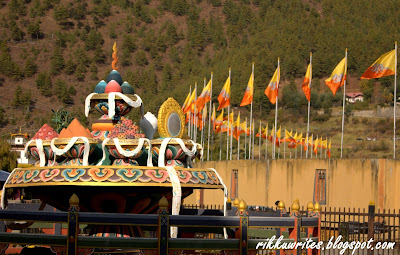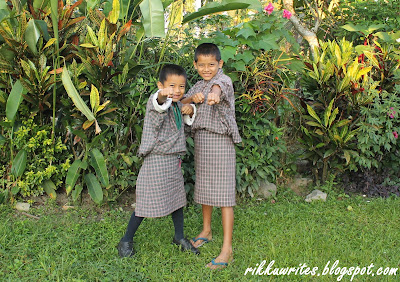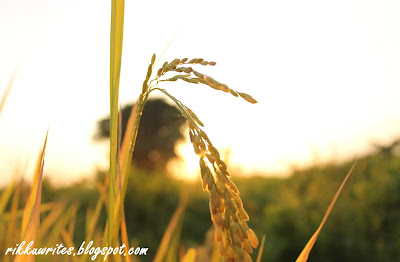 |
| Art by Kinzang Tshering |
I
was debating with myself whether to write this post; I felt overall intrigued
and nervous. For a long time, I hesitated as I thought my pen was not mighty
enough to write about our Fourth Druk Gyalpo. But if not today, then when?
To begin
this, I run momentarily at a loss of words. In fact, so much have been recorded
in words and said about our godly King, extensively, venerably. In this ocean
of profound writing, my writing comes as just a drop of water.
I
consider that I’m one of the luckiest persons to have lived in the era of
Drukgyal Zhipa. Truly speaking, I’ve never seen Him with my naked eyes. His
Majesty the King didn’t visit the schools and college during the time I was
studying. I was out of luck, though. But I think I saw Him in a couple of
occasions; I’m not sure, though. Maybe I’m wrong.
On
first occasion, it was at Kurje Lhakhang, Bumthang somewhere between 2001 and 2002.
That evening, it was raining lightly, foggy too. Along with my friends, I was returning
to our school (Jakar HSS) after visiting the lhakhang. At that moment, a Toyota
landcruiser just ran by.
My
friends whispered, “Look, King! King!”
I turned
my gaze and stole a quick glance of the person behind the closed window glass
of the car. Yes, the person sitting on the front seat looked like our Drukgyal
Zhipa. But was he really the One? No matter what, that evening I returned my
hostel feeling deeply blessed; for I believed I saw the King.
On
another occasion, I think I saw Drukgyal Zhipa at Jungshina, Thimphu in 2010.
Then, late evening, I was out for my regular evening walk. Two men in black gho
came cycling - one ahead and another following. My instinct made a quick
judgement, He could be the Fourth King.
But
I couldn’t say it with guarantee. It was dark and I couldn’t really recognize
people. Still then, it had made my day.
Several
other occasions, I saw the King at Changlimithang but from far afar. I wish to
see the divine King and experience that feeling of melting myself in reverence
in front of Him.
No
matter what, the image of our Dharma King has deeply seeped into my heart and
His words are engraved deep into my mind. Since young, I’ve lived by His accruing
words and wisdom always feeling inspired and patriotic.
Drukgyal
Zhipa, who mostly wears sethra gho, is the most handsome person I ever saw.
Those people who saw Him told me the King looks way more charming in person. He
literally glows, they say proudly.
He
is a King who hardly smiles. But when He smiles, it naturally brings smiles on
me and on everyone else too. I grew up believing that a King would be someone very
handsome with many beautiful queens, and the King is supposed to smile very less.
Known
as “Fearless Lion”, His actions and words were full of the fearless and
sacrifices. I felt new admiration when He himself led army troop to fight the military
insurgents in the southern Bhutan in 2003 and when He instituted democracy
sacrificing His own throne.
In
disposition of pure and noble heart, He lives a simple life serving the people
and ensuring peace, sovereignty, socio-economic development and happiness. So
much had changed under His leadership, for better. His contributions are so
huge; I cannot say it all, even a tiny portion.
When
I was delving into finding my own selfish endeavors, Drukgyal Zhipa, the Kidu Gi Pham, was working hard towards
nation building, entirely for us, forgoing His leisure time and comfort. He has
played a central role in each and every one of our lives. The nation as is
today, the Bhutanese as are today, all thanks to our “Father of the Nation”.
Today,
as the nation celebrates His Majesty’s 60th Birth Anniversary, my
heart swelled with pride and utmost gratefulness. I was simply astounded
looking at the way we, the Bhutanese people, carry love and respect for our
King. In small ways of our own, we took different initiatives to show our love and
gratitude for Him.
I
am not sad that I couldn’t meet my King in person. But today I proudly declare
that I’m one of the reflections (small though) of Drukgyal Zhipa’s vision; I believe
that I’m what He aspires to see in His people. For a King like Him doesn’t belong
to our time, a particular time; Drukgyal Zhipa is for all times.
On
your 60th Birth Anniversary, Your Majesty, I pledge myself to
serve my King and nation with my best ability in my own little ways. Happy
Birthday, Druk Gyalpo and May you live long!

























































